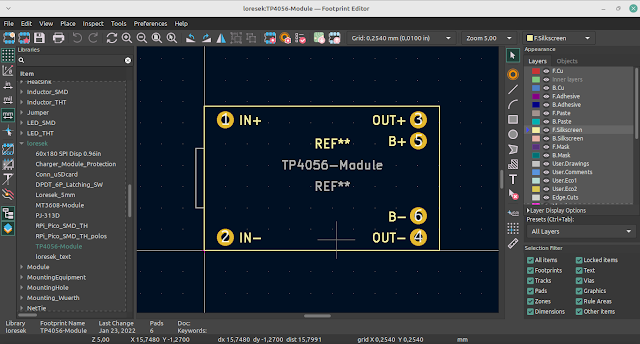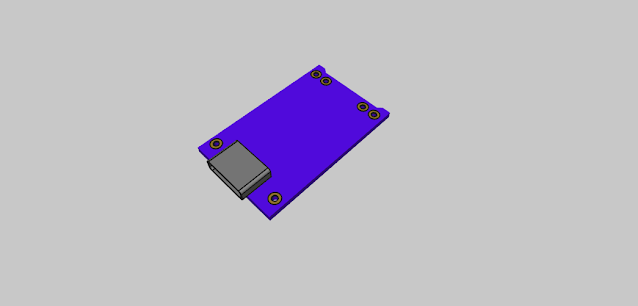Exploring KiCanvas: A Browser-Based Viewer for KiCAD Files
KiCanvas is an interactive, browser-based viewer for KiCAD schematics and boards |
If you’ve ever worked with KiCAD for creating schematics and PCB designs, you know how essential it is to have a reliable way to view your files. Enter KiCanvas — a modern, interactive, browser-based viewer designed specifically for KiCAD schematics and boards. Whether you're an electronics enthusiast, a hobbyist, or a seasoned PCB designer, KiCanvas offers an exciting way to view your designs directly in your browser. Let’s dive into what KiCanvas is all about and why it’s creating a buzz in the electronics community.
What is KiCanvas?
KiCanvas is an open-source project that allows users to view KiCAD schematics and PCB designs right in their web browser. Created by developer Thea Flowers, this tool aims to provide a seamless, lightweight, and dependency-free experience for viewing KiCAD files without needing additional plugins or software installations. You can try it out for yourself at kicanvas.org.
Key Features of KiCanvas
Interactive Viewing Experience
KiCanvas leverages the power of modern web technologies like TypeScript, the Canvas element, and WebGL for rendering. This ensures a smooth, interactive experience when exploring your PCB layouts and schematics.Browser Compatibility
While KiCanvas works well on desktop versions of Chrome, Firefox, and Safari, it’s still in the early alpha stage, meaning some features may not be fully implemented yet. Users are encouraged to report any compatibility issues they encounter, particularly if using other browsers.Direct File Support
One of the standout features of KiCanvas is its ability to read KiCAD files directly — no need for extra plugins or third-party tools. This makes it incredibly easy to share and view your designs online, especially when showcasing projects to collaborators or clients.Embedding API
KiCanvas isn’t just a standalone viewer; it can be embedded into your own website using its embedding API. This is a great option for developers or businesses who want to integrate a KiCAD file viewer directly into their web platforms. However, since the project is in its early stages, the embedding API is still evolving.Open Source and Community-Driven
The project is published under the permissive MIT license, making it an excellent choice for developers looking to contribute or integrate it into their own projects. You can find more information about contributing on the KiCanvas GitHub page.
Current Limitations
Given that KiCanvas is still in its early alpha phase, there are a few known limitations to keep in mind:
No Support for KiCAD 5 Files
KiCanvas only supports files from KiCAD 6 and later versions. KiCAD 5 uses a completely different file format, and the development team has decided not to support it due to the significant effort required to build a compatible parser.Partial Support for KiCAD 7
Although KiCAD 7 files are mostly supported, some features — like custom fonts in schematics — may not render correctly yet. The developer is actively working on bringing full support for KiCAD 7 features.Browser Testing Limitations
Automated testing is currently limited to desktop versions of popular browsers (Chrome, Firefox, and Safari). Issues may arise when using other browsers, and the team is open to receiving reports on compatibility problems.
A Promising Roadmap
The future of KiCanvas looks bright. Some of the exciting features planned for upcoming releases include:
Assembly Guide Mode
This feature aims to provide an interactive PCB assembly guide, similar to tools like InteractiveHtmlBom, but without the need for additional plugins. This would make KiCanvas an excellent tool for both professional and DIY electronics projects.Enhanced Developer APIs
The developer-facing APIs for embedding and parsing KiCAD files are not yet finalized. Once the rendering capabilities reach a stable state, these APIs will be released, making it easier for developers to integrate KiCanvas into various platforms.
Why Choose KiCanvas?
- No Plugins Needed: Unlike many other viewers, KiCanvas reads KiCAD files directly without requiring any plugins or add-ons.
- Lightweight and Dependency-Free: The decision to avoid using external libraries makes KiCanvas a lightweight solution, reducing the risk of conflicts when embedding it on web pages.
- Active Development and Community Support: The project is led by a dedicated developer with support from sponsors, and contributions are welcome. The open-source nature of KiCanvas allows for ongoing improvements and feature requests from the community.
Getting Involved
There are several ways to get involved with KiCanvas:
- Test It Out: Head over to kicanvas.org and try loading your KiCAD 6 or 7 files. Experiment with the tool, and don’t hesitate to report any bugs or issues you encounter.
- Contribute Code: If you’re a developer, consider contributing to the project. Since KiCanvas is still in its early stages, it’s recommended to coordinate with the team before diving into code contributions.
- Sponsor the Project: KiCanvas is currently funded by sponsors. If you find the tool valuable, consider becoming a sponsor to support its ongoing development.
Final Thoughts
KiCanvas is shaping up to be a valuable addition to the KiCAD ecosystem, offering a simple yet powerful way to view schematics and PCB layouts directly in the browser. While it’s still in alpha and has some rough edges, the project’s active development and clear roadmap indicate that it has a lot of potential.
Whether you’re looking to embed a viewer on your website, share your designs with others, or simply try a new tool for viewing KiCAD files, KiCanvas is definitely worth checking out. Give it a spin at kicanvas.org, and see how it can fit into your workflow.











